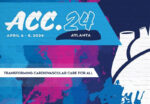Susheel K. Kodali.2012-03-25
Aortic stenosis, patient guide
Aortic valve stenosis occurs when calcium deposits in the valve cause leaflets hardening. It is a degenerative process that gets worse as the person ages. As the disease develops, valve opening is narrowed, obstructing blood flow and forcing the heart to pump harder. Aortic valve replacement is the standard treatment for severe aortic stenosis. Without<a href="https://solaci.org/en/2015/06/01/aortic-stenosis-patient-guide/" title="Read more" >...</a>
Transcatheter valve replacement for bicuspid aortic valve stenosis
Original title: Comparison of Results of Transcatheter Aortic Valve Implantation in Patients with Severely Stenotic Bicuspid versus Tricuspid or Non-Bicuspid Valves. Reference: Charis Costopoulos et al. Am J Cardiol. 2014 Jan 31. pii: S0002-9149(14)00554-2. The bicuspid aortic valve (BAV) is the most common congenital cardiac malformation. It occurs in approximately 1% of the general population and often<a href="https://solaci.org/en/2014/03/11/transcatheter-valve-replacement-for-bicuspid-aortic-valve-stenosis/" title="Read more" >...</a>
Flow-Gradient Patterns can help in the selection of patients with aortic stenosis
Original title: Flow-Gradient Patterns in Severe Aortic Stenosis UIT Preserved Ejection Fraction. Clinical Characteristic and Predictos of Survival. Reference: Eleid, M, et al. Circulation 2013;128:1781-1789 Severe aortic stenosis is usually defined by echocardiography as a 40 mm mean transvalvular gradient Hg at >4 m/s; but there are low flow or paradoxical low flow cases with different evolution. 1704<a href="https://solaci.org/en/2013/10/22/flow-gradient-patterns-can-help-in-the-selection-of-patients-with-aortic-stenosis/" title="Read more" >...</a>
Estenosis aórtica: prevalencia, directrices, nuevos tratamientos y datos actuales.
Estudios epidemiológicos han determinado que una de cada ocho personas de 75 años o mayores sufren de estenosis aórtica (EA) moderada o severa.1 Varios sondeos han mostrado que muchos pacientes con EA severa no se derivan a un equipo cardiológico para evaluar una sustitución de la válvula.2 La sustitución de válvula aórtica (SVA) quirúrgica es<a href="https://solaci.org/en/2011/01/01/estenosis-aortica-prevalencia-directrices-nuevos-tratamientos-y-datos-actuales-2/" title="Read more" >...</a>
EuroPCR 2024 | NOTION-2: TAVI vs SAVR, Randomized Study on Low-Risk Young Patients with Severe Tricuspid Disease or Bicuspid Stenosis
Many of the studies comparing TAVR against SAVR in low risk patients included patients between 70-75 years, excluding those with tricuspid valves. This study included low surgical risk patients with severe aortic stenosis and symptoms, 75 years or younger. Participants were randomized 1:1 to receiving TAVR or SAVR, stratified according to sex, need for new<a href="https://solaci.org/en/2024/05/17/europcr-2024-notion-2-tavi-vs-savr-randomized-study-on-low-risk-young-patients-with-severe-tricuspid-disease-or-bicuspid-stenosis/" title="Read more" >...</a>
ACC 2024 | SMART Trial: Self-Expanding or Balloon-Expandable TAVR in Patients with Small Aortic Annulus
Patients with severe aortic stenosis and a small aortic annulus face an increased risk of deteriorated valvular hemodynamic performance and adverse cardiovascular clinical outcomes after undergoing transcatheter aortic valve replacement (TAVR). This study, a prospective multicenter randomized trial, aimed to compare the efficacy and safety of two types of valves: the supra-annular self-expanding EVOLUT (SEV)<a href="https://solaci.org/en/2024/04/12/acc-2024-smart-trial-self-expanding-or-balloon-expandable-tavr-in-patients-with-small-aortic-annulus/" title="Read more" >...</a>
Carotid Stenosis and TAVR
Aortic Stenosis affects over 5% of the population over 65. Even though TAVR has advanced in the treatment of this disease, many patients present carotid aortic stenosis (CAS), which involves additional surgical risk. This risk has not been thoroughly assessed in the context of TAVR. A meta-analysis was carried out including 5 observational studies with<a href="https://solaci.org/en/2024/01/12/carotid-stenosis-and-tavr/" title="Read more" >...</a>
MyVal Device in Non-Calcified Severe Aortic Regurgitation
Due to the proven long-term results and substantial increase in the number of transcatheter aortic valve implantation (TAVI) procedures conducted, the application of TAVI has been extended to clinical situations outside the original scope, such as non-calcified aortic regurgitation (NCAR). Device placement in these new scenarios entails a technical challenge due to the absence of<a href="https://solaci.org/en/2023/08/23/myval-device-in-non-calcified-severe-aortic-regurgitation/" title="Read more" >...</a>
New Devices for Percutaneous Treatment of Native Aortic Regurgitation: Expanding Horizons
Severe aortic regurgitation (AR) may account for 20% to 30% of all surgical aortic valve replacements (SAVR) and is often associated with aortic stenosis (AS). Transcatheter treatment of these patients is limited due to anatomical factors such as root and annular dilation, large annular dimensions, and less calcification in the valve leaflets to serve as<a href="https://solaci.org/en/2023/06/26/new-devices-for-percutaneous-treatment-of-native-aortic-regurgitation-expanding-horizons/" title="Read more" >...</a>







